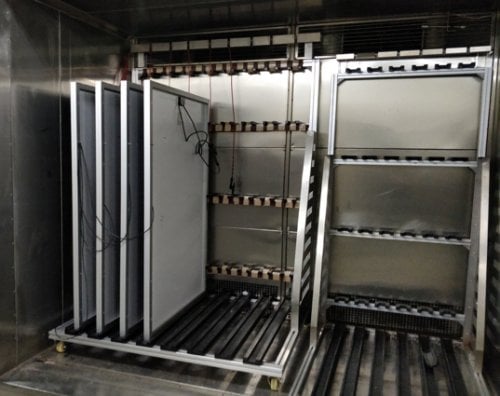EVA Gel Content Testing for Solar Modules
Perform EVA Gel Content Testing on solar modules at our Accredited PV Laboratory.
What is the EVA Gel Content test?
EVA Gel Content test (known as a measure of Crosslinking ratio) is a quality test of solar modules. Gel content of EVA is a measure of the degree of crosslinking in the polymer. Lower gel content can indicate lower degree of crosslinking, which can severely jeopardize the long term mechanical integrity of the solar module.
Requirements for EVA Gel Content testing
- For the extraction method, an amount of approximately 15 gm cured EVA is required. This is a destructive process, since the module will be opened at 3 different points to prepare the EVA samples (squares of 18cm²).
- For the DSC analysis only few grams are required as the specimen is just a few milligrams. Also three specimens are collected.
Types of EVA Gel Content tests
There are two types for gel content testing which are commonly used
- Gel content measurement through soxhlet extraction.
This method has proved to be the best method for eliminating most of the uncertainties. The thermal history of the EVA material after it is cured is not important.
- Analysis by DSC (differential scanning calorimetry).
The thermal history of the module is important for this test and there should be enough peroxide left to ensure full curing.
EVA Gel Content Testing and ASTM D-2765
ASTM D-2765 specifies the testing standard which should be clearly followed to determine EVA encapsulant gel content precisely. Different variations of the same test can often be used to approximate the gel content values during manufacturing. The EVA Gel Content levels of 70% or higher are recommended for longer lifetime of solar modules.


